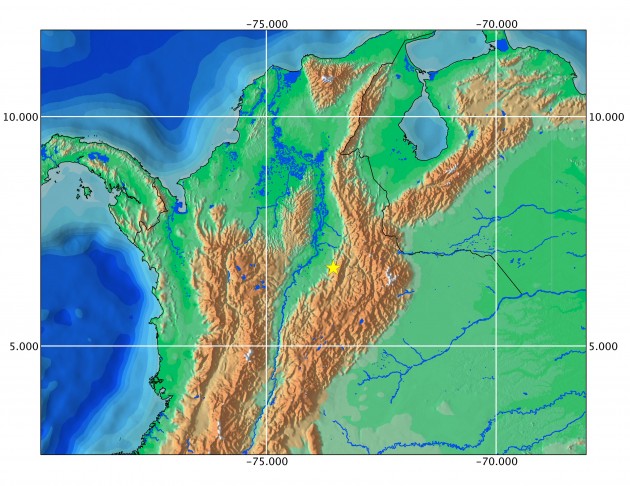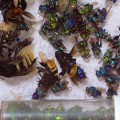WHAT
A new species of stick catfish from South America, so called because the thin, elongated bodies of these fish mimic sticks. About 5 inches long, it lives on the bottom of clear-running streams among partially submerged vegetation and sticks.
SCIENTIFIC NAME
Farlowella yarigui is named for the Yariguíes National Park where it was found in the Magdalena River basin in the western piedmont of the Department of Santander, Colombia.

A male “F. yarigui.” This species belongs to a subfamily of armored catfish and is covered in bony plates that protect it from predators, such as birds and predator fishes.
A FIRST
Its habitat makes F. yarigui the first and only species of its genus found living in the Magdalena River basin, west of the Andes Mountains in South America. Its closest relatives live in the Maracaibo basin in Venezuela, as well as east of the Andes in the Orinoco, Guyana, Amazon and Paraná drainages.
APPEARANCE
Both sexes of these fish have pronounced snouts. The male’s snout is covered with bumps called “hypertrophied odontodes” for which there is no known purpose. “It seems they serve for reproductive purposes such as courtship and display,” says Gustavo Ballen, of the Smithsonian Tropical Research Institute, co-author of the paper describing this new fish. Females also have snout bumps but they are not so well developed.

F. yarigui was collected in Yariguíes National Park in Santander, Colombia. Fishes of the genus “Farlowella” are commonly found in microhabitats such as the one shown here, with clear water and submerged vegetation.
F. yarigui also belongs to a subfamily of armored catfish and is covered in bony plates that protect it from predators, such as birds and predator fishes. “Their bony cover and general color pattern also allow them to mimic their environment and hide from predators,” Ballen explains.
FOOD
Their teeth are adapted for scraping algae from sticks, wood and rocks, which they consume aided by their sucker mouth. Their gut is long, which is a characteristic of herbivorous animals. Some fishes in the Loricariidae also feed on small invertebrates (even snails) and seeds.
CARE OF YOUNG
Once they are laid by the female, the male takes over care of the eggs. After the eggs are laid the female abandons her brood, that remain under care of the male.

Its habitat (marked by yellow star) makes F. yarigui the first and only species of its genus found living in the Magdalena river basin, west of the Andes Mountains in South America. Its closest relatives live in the Maracaibo basin in Venezuela, as well as east of the Andes in the Orinoco, Guyana, Amazon and Paraná drainages.
EVOLUTIONARY HISTORY
The similarity of Loricariid catfishes (a large catfish family with bony plates and sucker mouths) with ancient fossil fishes has been noted by ichthyologists since long ago, yet fishes with armored bodies that look ancient do not necessarily represent early forms, Ballen says. “The fossil record of Loricariid catfishes goes back only to the late Oligocene (around 24 millon years ago), and their origin doesn’t seem to be earlier than the late Cretaceous (around 100 millon years ago). So, this group would be quite young in the evolutionary context of bony fishes in contrast with what its morphology might suggest, since bony fishes appeared on earth during the Silurian (around 430 millon years ago). There is still much to discover about the origin of armored catfish.”
HUMAN IMPACT
F. yarigui lives in a very restricted area—the Magdalen basin—that is currently threatened as most of the Colombian human population is concentrated there, Ballen says. “Still, the discovery of such an outstanding catfish indicates that lots of new discoveries are likely to be made in this area.”
Article link: “A new trans-Andean Stick Catfish of the genus Farlowella Eigenmann & Eigenmann, 1889 (Siluriformes: Loricariidae) with the first record of the genus for the río Magdalena Basin in Colombia,” by Gustavo A. Ballen and Jose I. Mojica, in the journal Zootaxa.





